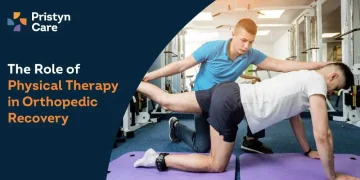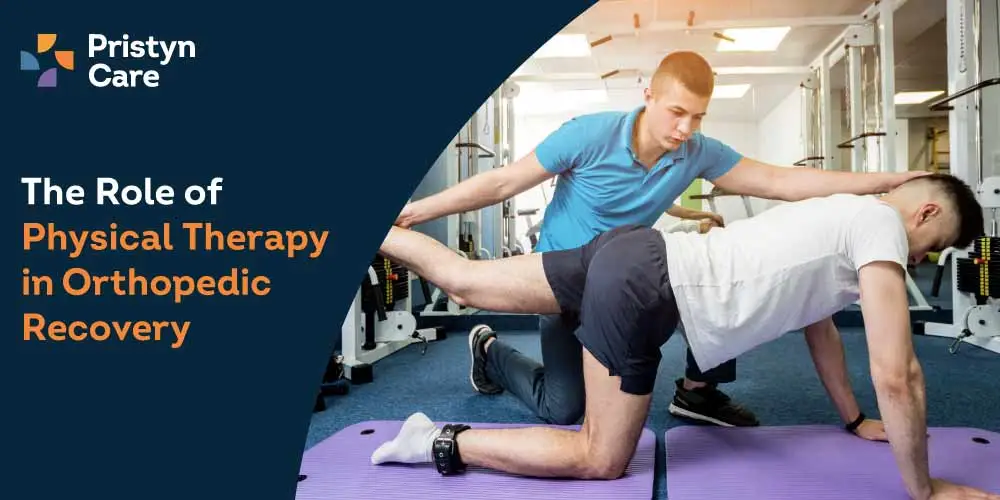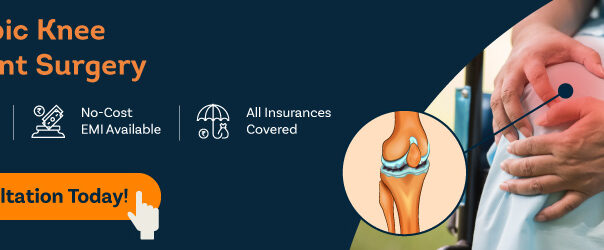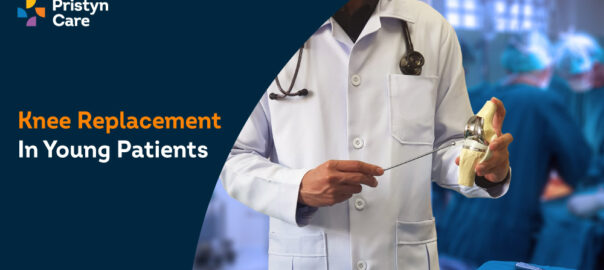![]() Views: 93
Views: 93
The Role of Physical Therapy in Orthopaedic Recovery
However, amongst these, physical therapy serves as a critical component in the recovery process. It involves targeted exercises and therapeutic modalities that help promote healing, restore function, and enhance strength.
Dedicated Support at Every Step!
Our Doctors are available 24 hours a day, 7 days a week to help you!
Call Us9513-316-643Physical therapy is not just about rehabilitation; it is also a preventative measure. It plays a key role in warding off further injuries while improving the overall well-being of patients. With tailor-made treatment plans, physical therapists aid patients in regaining their mobility and strength, thus enabling them to return to their everyday activities and hobbies. This holistic approach addresses not just the physical aspects of recovery but also fosters mental resilience, empowering patients to overcome the challenges posed by their injuries. In this context, understanding orthopaedic injuries and their impact on mobility is crucial for effective long-term health.
Table of Contents
Understanding Orthopaedic Injuries and Their Impact on Mobility
Orthopaedic injuries encompass a broad spectrum of conditions that affect the musculoskeletal system—bones, joints, ligaments, tendons, and muscles. They can significantly disrupt your ability to move freely—to walk, run, or even sit comfortably. Let us discuss some common types of orthopaedic injuries:
- Fractures: These are breaks in the bone caused by trauma, falls or sports injuries. Symptoms include severe pain, swelling, and an inability to use the affected limb. These injuries can dramatically curtail your mobility, rendering everyday tasks challenging.
- Sprains: Sprains occur when ligaments — tissues connecting bones at a joint — are stretched or torn. Injuries like these are often seen in ankles and knees, usually due to twisting movements. Symptoms such as pain, swelling, and bruising can hinder your mobility and stability.
- Strains: Strains involve stretching or tearing of muscles or tendons, typically due to overexertion or incorrect lifting procedures. They may result in muscle spasms, swelling, and limited movement, affecting your daily activities and physical performance.
- Tendonitis: Tendonitis involves inflammation of a tendon, often due to repetitive motion or overuse. This condition commonly affects the shoulders, elbows, and knees. Accompanied by symptoms like pain and tenderness, it can restrict movement and lead to other injuries.
These injuries can significantly disrupt our mobility, making everyday tasks like walking, climbing stairs, or even sitting comfortably a challenge. This impact on daily life can lead to decreased independence and lower quality of life. This highlights the importance of timely and effective rehabilitation strategies, particularly physical therapy.
Now that we have understood the types of orthopaedic injuries and their impact on our mobility, let us delve into how physical therapy can aid in recovery and restoring our quality of life.
No Cost EMI, Hassle-free Insurance Approval
The Role of Physical Therapy in Orthopaedic Rehabilitation
Physical therapy plays an integral role in the treatment of orthopaedic injuries. Its primary purpose is to aid in alleviating pain and promoting recovery, thereby restoring strength, flexibility, mobility, and overall function following musculoskeletal injuries or surgeries. The main objectives of physical therapy in such cases are to relieve pain, speed up recovery, and help patients return to their normal activities. Let us delve deeper into the ways physical therapy contributes to orthopaedic rehabilitation.
Strength Improvement
In the wake of an injury or surgery, specific muscle groups often need targeted attention. Here is where physical therapy comes into play. Tailored exercise programs are developed to gradually increase strength, which is vital for supporting joints and preventing further injuries. After a knee replacement operation, for example, physical therapists focus on strength training exercises that rebuild the muscles surrounding the knee. This aids in improving stability and helps restore normal function.
Enhancing Flexibility and Mobility
When dealing with injuries or post-surgery conditions, stiffness and decreased mobility are common challenges. Physical therapists use various techniques, including stretching and joint mobilisation exercises, to enhance flexibility and range of motion. These exercises, when incorporated into rehabilitation programs, help patients regain their ability to perform daily activities without discomfort.
Pain Reduction
Pain management forms a significant component of orthopaedic rehabilitation. The multidimensional approach adopted by physical therapists includes manual therapy, thermal modalities like heat or cold therapy, and therapeutic exercises—all these work synergistically to reduce inflammation and alleviate pain. This approach does more than just relieve immediate discomfort—it also promotes long-term recovery by addressing the underlying causes of pain.
Restoring Normal Function
The ultimate goal of physical therapy in orthopaedic rehabilitation is restoring normal function. It involves more than just regaining strength and flexibility—it also includes improving balance, coordination, and overall physical fitness. By tailoring treatment plans to individual needs and goals, physical therapists guide patients through their recovery journeys, helping them achieve personal rehabilitation goals and return to their pre-injury activity levels.
In summary, physical therapy is indispensable in orthopaedic rehabilitation as it significantly contributes to pain reduction, enhancement of strength, improvement of flexibility, and restoration of normal function—paving the way for a comprehensive recovery process for patients. This invaluable medical discipline has, and will continue to have, a lasting impact in helping individuals return to their pre-injury levels of activity and quality of life.
Physical Therapy Techniques for Orthopaedic Recovery
Orthopaedic recovery often necessitates a blend of physical therapy techniques. These methods aim to restore movement, alleviate pain, and improve overall function. The two primary strategies we will delve into are manual therapy and therapeutic exercises.
Manual Therapy
Manual therapy comprises hands-on techniques that physiotherapists employ to relieve pain and boost mobility. Let us explore some key techniques:
- Massage: In this technique, the therapist manipulates the patient's soft tissues to reduce muscle tension, enhance circulation, and promote relaxation. Various types such as Swedish massage or deep tissue massage can be customised to the patient's needs.
- Mobilisation: Here, the physiotherapist gently moves the joints within their normal range of motion. This method aims to improve joint function and alleviate stiffness. It is often used for conditions like arthritis or during post-surgical recovery.
- Manipulation: This is a more forceful technique intended to restore proper alignment and function to joints. Often linked with chiropractic care, manipulation can be beneficial for conditions like back pain or joint dysfunction.
These manual therapy techniques can significantly expedite recovery by addressing pain and enhancing mobility.
Therapeutic Exercises
Therapeutic exercises form a critical part of restoring movement and function following an orthopaedic injury. Let us take a look at some categories of these exercises:
- Range of Motion Exercises: These exercises are designed to improve flexibility and mobility in affected joints. They are crucial in preventing stiffness and promoting healing.
- Strengthening Exercises: These targeted exercises help rebuild muscle strength around the injured areas, providing vital support for joints and helping avert future injuries. Tools like resistance bands, weights, or body weight can be utilised.
- Balance and Coordination Exercises: These exercises aim at enhancing stability and proprioception (the body's ability to sense its own position), thereby reducing the risk of falls and further injuries. Activities might comprise standing on one leg or using balance boards.
Incorporating these therapeutic exercises into a rehabilitation programme can lead to improved function and a quicker return to everyday activities. Remember, your doctor and physiotherapist will guide you with the best methods suitable for your condition.
Benefits of Physical Therapy in Orthopaedic Recovery
Physical therapy is a key aspect of recovery after orthopaedic injuries or surgeries. Here are some significant benefits of incorporating physical therapy into your rehabilitation plan:
- Enhanced Recovery Speed: Physical therapists create specific exercises and treatment plans that help patients regain their strength, flexibility, and range of motion more quickly. This speeds up the recovery process.
- Improved Mobility: Physical therapy employs special techniques and exercises to help patients overcome mobility issues. These methods help patients to move freely once again, without pain or discomfort.
- Decreased Pain: Physical therapy uses various approaches like heat/cold therapy, electrical stimulation, and manual techniques to reduce pain and inflammation. This lets patients progress more comfortably through their rehabilitation.
- Prevention of Surgery: In some instances, physical therapy can help patients avoid surgery. It does so by treating the underlying cause of their condition and restoring proper function through non-invasive methods.
- Improved Overall Health: Physical therapy boosts overall health by enhancing cardiovascular fitness, balance, and posture, thereby reducing the risk of future injuries or complications.
Conclusion
Physical therapy is a vital component of orthopaedic recovery, equipping patients with the necessary tools and guidance to regain their strength, mobility, and quality of life. By closely collaborating with a physical therapist and following a structured rehabilitation plan, patients can maximise their recovery potential and achieve their goals more effectively.
If you are dealing with an orthopaedic injury or gearing up for surgery, consider seeking professional advice from a physical therapist. This will ensure a successful and comprehensive recovery process. Remember, every individual's needs are unique, hence your therapy plan should be tailored according to your requirements for optimal results. So choose physical therapy for your orthopaedic recovery and take a definitive step towards better health.
FAQs
- What is the role of physical therapy in orthopaedic recovery?
Physical therapy plays a vital role in orthopaedic recovery. It helps to restore strength, flexibility, and function in the affected area after an operation or injury. The structured exercises and movements reduce pain, prevent stiffness and promote faster healing. - How can physical therapy aid in recovering from an orthopaedic surgery?
After an orthopaedic surgery, activities like walking or even standing may be challenging. A physical therapist will design a customised programme to help regain strength and mobility. The therapy often includes stretching, resistance training, and balance exercises. - Does physical therapy decrease the need for medication after an orthopaedic procedure?
Yes, physical therapy can reduce the dependency on pain medication post-surgery by managing discomfort through therapeutic exercises and techniques. Always consult your doctor before altering your medication routine. - Is physical therapy required for all orthopaedic conditions?
Not all orthopaedic conditions need physical therapy. However, it is often recommended for common conditions like fractures, joint replacements, arthritis, and sports injuries to speed up recovery and improve function. - What are the different types of physical therapies used in orthopaedic recovery?
The types of physical therapies include manual therapy (hands-on treatment), hydrotherapy (water-based exercises), electrotherapy (use of electrical energy) and exercise therapy (strength and flexibility exercises). Your therapist will choose the best method based on your individual needs. - Can physical therapy help prevent future orthopaedic issues?
Yes, besides aiding in recovery, physical therapy also focuses on preventing future injuries. It promotes healthier habits, improves posture, strength, balance, and teaches safer ways to perform daily activities. - How long does it take for physical therapy to show results in orthopaedic recovery?
The timeframe varies depending on the severity of the condition, individual health status and commitment to the therapy programme. However, noticeable improvements are generally seen within a few weeks. - Can physical therapy create complications during orthopaedic recovery?
Under the guidance of a professional therapist, physical therapy is generally safe. However, overexertion or incorrect techniques can lead to complications. Always communicate with your therapist about any discomfort or pain during the sessions. - Can I carry out physical therapy exercises for orthopaedic recovery at home?
Yes, your therapist will often recommend exercises to do at home to supplement the therapy sessions. Adhering to this home regimen will quicken the healing process and improve results. - Are there any precautions one should take while undergoing physical therapy after orthopaedic surgery?
Ensure you always warm-up before starting exercises and cool down afterwards. Avoid overdoing exercises, as it can lead to strain and injury. Inform your therapist about any pre-existing conditions or medications you are on, to avoid any adverse effects from the therapy.












